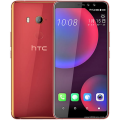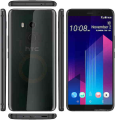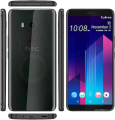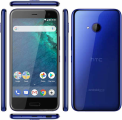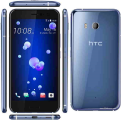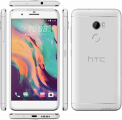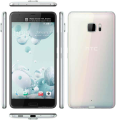HTC One A9 Prices
Important Note.
- All prices are in Pakistani Rupee (PKR)
- Prices may vary at stores and our effort will be to provide you with the updated prices.
- The latest price of HTC One A9 was obtained on 17 مئی, 2019. The prices at the original stores had been updated on the respective mentioned dates.
- Find out WhatMobile price has dropped in Pakistan by selecting Notify Price Drop button
- Find out WhatMobile has better specifications by clicking Add To Compare Button find out what Mobile has better reviews by visiting our reviews section
- Find out WhatMobile is cheaper on which retailer by clicking Compare prices from retailers button
Search Terms
- HTC One A9
Specifications
| GENERAL | |
| 2G Network | GSM 850 / 900 / 1800 / 1900 |
|---|---|
| 3G Network | HSDPA 850 / 900 / 1700(AWS) / 1900 / 2100 - Americas HSDPA 850 / 900 / 1900 / 2100 |
| 4G Network | LTE band 2(1900), 3(1800), 4(1700/2100), 5(850), 7(2600), 12(700), 13(700), 17(700), 29(700) - Americas |
| Sim | Nano-SIM |
| Announced | 20/09/2015 |
| Status | Available. Released 2015, November |
| BODY | |
| Dimensions | 145.8 x 70.8 x 7.3 mm (5.74 x 2.79 x 0.29 in) |
| Weight | 143 g (5.04 oz) |
| DISPLAY | |
| Display Size | 5.0 inches, 68.9 cm2 (~66.8% screen-to-body ratio) |
| Resolution | 1080 x 1920 pixels, 16:9 ratio (~441 ppi density) |
| MultiTouch | Yes |
| Protection | Corning Gorilla Glass 3 - HTC Sense |
| SOUND | |
| AlertTypes | Vibration; MP3, WAV ringtones |
| LoudSpeaker | Yes |
| 3.5mm jack | Yes - 24-bit/192kHz audio - Dolby audio enhancement - Active noise cancellation with dedicated mic |
| MEMORY | |
| CardSlot | microSD, up to 256 GB (dedicated slot) |
| Internal | 32 GB, 3 GB RAM |
| DATA | |
| GPRS | Yes |
| EDGE | Yes |
| Speed | HSPA, LTE-A Cat7 (2CA) 300/100 Mbps |
| WLAN | Wi-Fi 802.11 a/b/g/n/ac, dual-band, Wi-Fi Direct, DLNA, hotspot |
| Blue Tooth | 4.1, A2DP, aptX |
| NFC | Yes (payments only) |
| USB | microUSB 2.0, USB Host |
| CAMERA | |
| Camera Primary | 13 MP, f/2.0, autofocus, OIS, dual-LED dual-tone flash, check quality |
| Camera Features | Geo-tagging, touch focus, face detection, panorama, HDR |
| CameraVideo | 1080p@30fps, check quality |
| CameraSecondary | 4 MP (f/2.0, 27mm, 1/3", 2 µm), 1080p@30fps, HDR |
| FEATURES | |
| Processor Cores | Quad-Core |
| OS | Android 6.0 (Marshmallow), upgradable to 7.0 (Nougat) |
| CPU | Octa-core (4x1.5 GHz Cortex-A53 & 4x1.2 GHz Cortex-A53) |
| Sensors | Fingerprint (front-mounted), accelerometer, gyro, proximity, compass |
| Messaging | SMS (threaded view), MMS, Email, Push Email |
| Browser | HTML5 |
| Radio | FM radio |
| GPS | Yes, with A-GPS, GLONASS |
| Java | No |
| Colors | Carbon Gray, Opal Silver, Topaz Gold, Deep Garnet, Pink |
| Others | - Fast battery charging (Quick Charge 3.0) - MP4/H.264 player - MP3/eAAC+/WAV player - Document viewer - Photo/video editor |
| BATTERY | |
| Battery | Non-removable Li-Ion 2150 mAh battery |
| StandBy | Up to 432 h (3G) |
| TalkTime | Up to 16 h (3G) |
| MISC | |
| SAREU | 0.41 W/kg (head) |
Reviews
What is HTC up to here? It's had a flagship launch at roughly the same time for years - the HTC One 'M' series has been a long-held tradition.
Sure there have been variants, but none that could claim to be a real flagship rival to the big hitter. That's all changed with the HTC One A9, which has a confusingly decent spec list and genuinely outperforms the HTC One M9, the company's hero device, in a number of areas.
The main improvements are to the camera and the music player - well, they would be if HTC's apps were on there. You see, this is a phone that's been given the once-over by Google, it seems, as it's one of the first to launch with Android 6 Marshmallow.
That means that HTC's stripped back a number of the design elements that make up its Sense UI, with the idea being that the A9 offers a sleeker, faster and more Google-y experience than ever before.
That's on top of an all new design language and a theoretically cheaper price point (more on that in a moment) - so given the spec list is strong, the phone feels great and the latest version of Android is there from launch, has HTC re-discovered its ability to make the best phones in the world?
Design
The HTC One A9 looks like an iPhone. There's not a lot more you need to know about it, and there will be a lot of other reviewers getting rather annoyed about the fact it's so similar.
There's no way this is an accident - I'm genuinely worried that HTC is going to invoke the Cupertino wrath with this phone, as it's just so similar in design.
The back of the phone looks and feels identical, the front bezel design is scarily close and the edges are rounded in the same way. In fact, it's easier to say what's not the same: the power button is jagged and much nicer to hit), the volume key is on the right-hand side of the phone and the headphone jack / mono speaker is swapped around compared to the iPhone 6S.
There are a few other very subtle differences (like a larger earpiece, a different location for the camera) but if you're wondering what people will say when they first see this phone, well, it'll be: 'That looks like an iPhone'.
That's not a bad thing, I suppose. The iPhone is, to some, the benchmark in terms of phone design and to offer and Android version of that might not be the worst idea. It smacks of HTC losing its nerve again, which is sad to see.
And let's not forget a few things: HTC came up with the cut-out strips of plastic to enable a metal frame that can still get some connectivity.
It's got a longer heritage of working with metal in its phones too - you can go back to the HTC One S if you need reminding of a ceramic-like surface, which precedes the iPhone 6 by a number of years.
But for so long HTC was the industry leader in terms of design (and perhaps it will continue to be with the One M10 - this is a different kind of phone, after all) but this doesn't feel like the jewellery-grade phone we've come to expect.
The One A9 is very, very well made though. It feels like a dream in the hand and certainly won't be subject to claims of bending any time soon - this thing is amazingly rigid and feels premium.
However, in terms of design I'm getting a similar feeling as the one I got when handling the Samsung Galaxy Alpha - it's a nice design, but it's not one that will make the phone desirable to all. Just those that crave a slimline 'fashionable' phone - and the battery size suffers as a result.
In terms of real innovation from HTC, there's not actually not that much to talk about here, as HTC has refined, rather than revolutionized, the parts of the phone its touting.
Camera
For instance, the camera is a big step forward, despite not actually being better (in terms of spec) than the One M9.
The 13MP sensor on the new One A9 delivers great photos though, with loads of sharpness and clarity, plus loads of other modes to improve the way things can be shot if you feel like getting a bit more professional.
For instance, there's a RAW mode on there - this takes a little longer to take pictures, but really does give you the full experience - and can even automatically sharpen such snaps without you needing to drag the snaps off the phone to a computer. It takes a little while though thanks to the slightly lower-power chipset used.
The pictures looks great on the 5-inch Full HD screen though - much better than the One M9. Zooming on the snaps reveals very little in the way of over-processing, and it's clear that HTC has worked hard to improve the camera on this phone to ensure it doesn't see a repeat of the criticism it picked up for the earlier model.
There are some issues - the speed of opening the app and the shutter speed are far from industry-leading - but given this isn't supposed to be a flagship phone, this can be forgiven.
Battery
Anyone picking up a spec sheet will instantly be worried about the battery life of the One A9 - it's gone from a 2850mAh cell to 2150mAh as it's now got a much thinner frame to squish into.
Given HTC's never been great at battery management (and generally, it's one of the worst around in past flagships) this is never going to bode overly well.
That said, the performance of the One A9 seems solid enough - if not stellar - in my early tests, with mostly getting through the day. It's improved over time though, so when I bring the full review and it's been through a few cycles I feel confident I'll be able to deliver a really stellar verdict.
But, the smaller power pack aside, there are many reasons to think HTC could have solved the battery issue thanks to the improved efficiency of Android Marshmallow, the sleeker software HTC's created and the lower-res Full HD screen (well, compared to the likes of the Galaxy S6 and LG G4).
The phone supports Qualcomm's QuickCharge 2.0 standard for super-speedy battery re-juicing, and will also get even better when v3.0 appears to speed things up further and up efficiency. Sadly, there's no QuickCharge power block in the box, which is a real shame - HTC says it's about giving users the choice, but in reality it's just a cost saving exercise that sadly means most people will never get the benefit.
All about the tunes
HTC's always been brilliant at making its phones sound brilliant, whether it's from using Boomsound front facing speakers, Dolby support to make movies and music sound amazing, or just sticking a dedicated amplifier in the mix to improve the level of sound output.
The brand has added all this into the mix again, but added in a decent DAC to help upscale all sound to 24-bit, 192Khz quality to make it sound as good as it can through the headphones. It'll support Hi-Res audio files (FLAC etc) and just tune any other music (even through Spotify) to make sure you get the best quality.
However, it's hard to say whether this is going to be enough of a game-changer, as LG, Samsung and Sony (the latter in particular) have been banging the Hi-Res audio drum for a long time now, and it's not really setting the world alight in terms of the 'must-have' feature of a new smartphone.
That said, the sound output is really rather good - I found myself reaching for the HTC One A9 when wanting to watch a new trailer or indulge in a spot of Spotify music thanks to the richness and level of detial pumping into my ears.
Is it needed? No, but it's a nice luxury.
Fingerprint scanner
No new phone with Android on is complete without a fingerprint scanner, and HTC's One A9 is no exception, allowing for biometric security to lock your phone. The process of setting up the fingerprint is nice and clear - plus thankfully swift - and the lozenge on the front of the phone is very quick to recognise your digits.
It's not clickable, which feels weird if you've used the Samsung Galaxy S6 or TouchID, but it works really well, functions as a second home button and should be a great addition when Android Pay turns up.
Interface
The new HTC Sense UI is completely changed - thanks to being much more Google-focused. There's something odd about the new user interface, as it seems to have come at the behest of Google. Everything that could look more like stock Android 6.0 has had the brush applied to it, meaning the notification shade is now almost identical to that offered by the new Nexus phones.
Google On Tap is supported through the home button (on the screen), and is a neat addition. It's not speedy, and does come up with some odd options, but it's clearly going to get faster and more intelligent as time goes on.
(In case you've forgotten, this will look for information on the screen and give you automatic search terms to enhance the information).
Overall, the interface isn't going to please HTC fans. It's slicker and cleaner, sure, but it's too much like stock Android for those that don't care as much about having a vanilla interface. The lack of HTC apps (Mail and Music, for instance, are dropped in favor of Google's options, and the internet browser is only Chrome) means there's not a lot of opportunity for customisation, but does keep the duplication to a minimum.
I don't mind the interface too much, as most of the time I'll add in my own apps anyway to make the experience just as I like. That said, it could definitely be faster (there's a lot of slowdown throughout the phone where I wish it wasn't - it's not destructive, but the slickness of the current crop of flagship phones isn't there) and the duplication does still exist - for instance, both Gallery and Photos are on there (HTC and Google respectively) as not all the features HTC needs (like RAW photo support) can be offered by Google.
Early verdict
The HTC One A9 is a decent phone from the brand. It feels like form over function at times, but then you dig a little deeper and realise that there's a lot going on that genuinely improves from the One M9.
We liked
The camera and design are both steps forward in my opinion (the latter simply because it's trying to improve the slightly-tired One design) and the feel of the phone in the hand is one that makes you feel like you're holding a premium device.
The slightly jagged power button is a nice touch, and makes the phone feel like something that's there to help you rather than design for the sake of it.
The speedy fingerprint scanner is a great first attempt from HTC (we'll forget about the scanning back option from the One Max) and the snaps that come from the camera definitely impress.
We disliked
I'm not convinced that HTC is going to be able to sort the battery issues. This smaller battery pack could be terrible if the power management and software don't work perfectly in unison - there are a lot of reasons to be hopeful that it will be OK, but I'm not holding onto that hope just yet.
The design, while nice, does echo Apple too much and will invariably lead to comparisons that HTC doesn't need. Then again, it does mean you'll be able to get the iPhone design fused with the Android ecosystem - I just expected to see that from a no-mark Chinese brand, rather than HTC.
Early verdict
Is this the phone to change HTC's fortunes? No, but then again, it was never going to. It's the same as Samsung's Galaxy Alpha: it's showing the world that HTC still has what it takes to adapt when it needs to, and combine that will decent hardware.
There are issues with the price - it's far too expensive in the UK, although in the US there's a better-spec and cheaper model, which irks.
HTC has done nothing wrong with the One A9 and quietly impresses in a number of ways. However, it's a step forward rather than the barn-stormer everyone was hoping for.
Write Your Own Review
My Recent Reviews
- Be first to post review for this product.
comments powered by Disqus




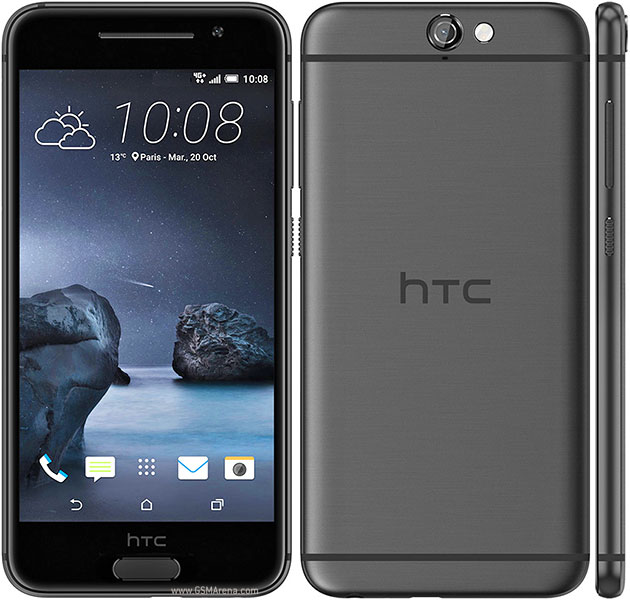
-470-75.JPG)

